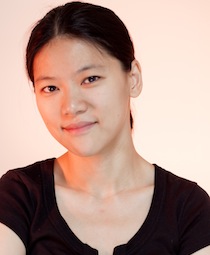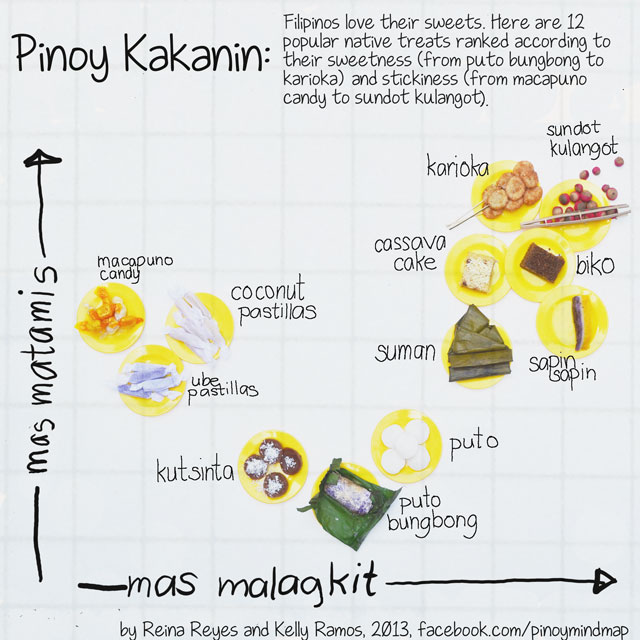SUMMARY
This is AI generated summarization, which may have errors. For context, always refer to the full article.

Suddenly, strangely, I found myself craving for suman. It was strange to me, this sensation, acute and lingering. I’ve never had one like it before, despite 8 years of living abroad. So I paid attention. And of course, I shared it on Facebook. A friend replied, “Your tastebuds must be getting homesick, Reina.” Indeed, they were. In fact, I was homesick down to my bones.
Just as well, for eating suman is not just about taste. It is a ritual in its own right. First, you unspiral the coconut leaf wrapping, stopping after a few circles to expose just the right amount of suman (so it will not sag, about 3 bitefuls).
Then you dip the suman headlong into (yes!) a plateful of sugar. Finally, you can take a bite. Savor it, and then do it all again, unwrapping bit by bit as you go, until it’s all gone.
As a kid, I carefully calibrated the size of each bite to get the optimal sugar-to-suman ratio throughout. Reliving the memory now, it’s no wonder my subconscious was taken hostage by the humble suman.
Out of the kakanin family to which it belongs, suman strikes a perfect balance: it was sweet but not too sweet, sticky but not too sticky. Somewhere between sapin-sapin (which sticks to your fork and to your teeth) and puto (which largely crumbles in your mouth).
Of course, soon I’m craving for all these other treats too: bibingka, puto bungbong, biko, cassava cake, palitaw, espasol, ube halaya, pichi-pichi… Is your mouth watering yet?
Cravings
I began to appreciate how unique each one is, and at the same time, how together they offer a combination of taste and texture unique in the universe of sweets. In fact, I cannot think of anything I can get here (in the city of Chicago, where we get the fanciest artisan cupcakes and donuts in the world) that would even come close.
So I put down my cravings on paper, and thus was born the most delicious chart I’ve made in my life. I present the Pinoy kakanin stickiness-sweetness plane:

This dozen kakanin is the bounty brought home by my friend and artist-collaborator Kelly Ramos after visiting her neighborhood palengke. I was impressed by the variety of delicious treats she was able to get, quite easily and cheaply, and envy her (though I suspect she had taken it largely for granted, as I did before).
She lives in Baguio so you’ll notice that we’ve included the famously-named local specialty, sundot kulangot (I will spare the reader the English translation). It turned out to be the sweetest and stickiest of the bunch. I’ll have to try one the next time I’m up there.
Spectrum of taste
As you can see, the kakanin form a “V”-shaped curve in the stickiness-sweetness plane, divided roughly into 3 groups. On the left, sweet but not too sticky, are the pastillas and macapuno candy. In the middle, sticky but not-too-sweet, are the sub-family of puto, kutsinta, and puto bungbong. The rest of the kakanin occupy the sweet-and-sticky region on the upper right corner. There we find suman, at the mildest end, followed by sapin-sapin, cassava cake, biko, karioka, and of course, the extremely gooey sundot kulangot.
So it seems my tastebuds are happiest at the intersection of mild sticky-sweetness where suman lies (though I have to say I also enjoy sapin-sapin very much). I suspect everyone will have their own optimal (sticky-)sweet spot.
A friend (again on Facebook) raised the intriguing possibility of “create-your-own-kakanin” by calibrating kakanin recipes to produce one’s preferred stickiness and sweetness. This could lead to artisan kakanin shops, where one can get personalized suman suited precisely to your taste. Who’s up for one? I certainly am.
Share with us what you think (and crave) in the comments! – Rappler.com
‘Pinoy Mind Map’ is a collaboration between scientist Reina Reyes and artist Kelly Ramos. They embrace their geekiness and artsiness, respectively, and combine them to produce data art pieces inspired by the Filipino experience. They can be reached at the blog’s Facebook page: facebook.com/pinoymindmap.
Add a comment
How does this make you feel?
There are no comments yet. Add your comment to start the conversation.